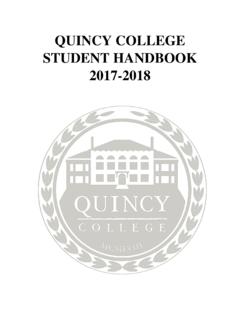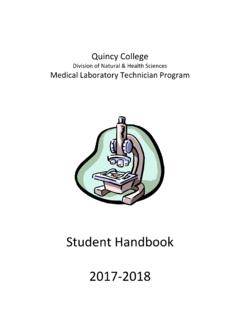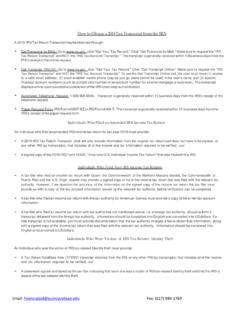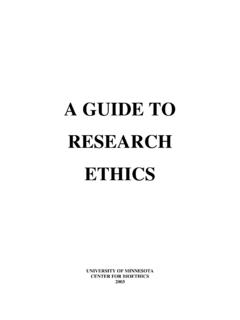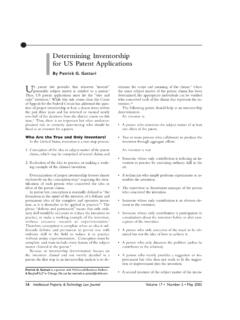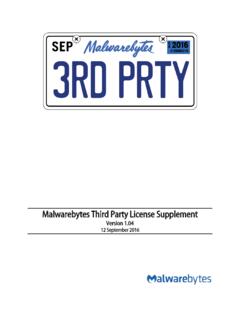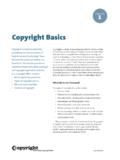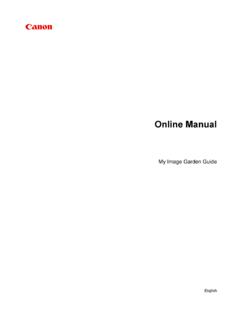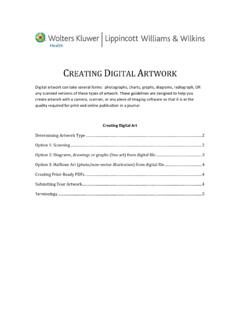Transcription of Anderson and Krathwohl Bloom’s Taxonomy Revised
1 Anderson and Krathwohl Bloom s Taxonomy Revised Understanding the New Version of Bloom s Taxonomy Leslie Owen Wilson (2016, 2013, 2005, 2001) Contact Leslie A succinct discussion of the revisions to Bloom s classic cognitive Taxonomy by Anderson and Krathwohl and how to use them effectively Background: Who are Anderson and Krathwohl ? These gentlemen are the primary authors of the revisions to what had become known as Bloom s Taxonomy an ordering of cognitive skills. (A Taxonomy is really just a word for a form of classification.) This Taxonomy had permeated teaching and instructional planning for almost 50 years before it was Revised in 2001.
2 And although these crucial revisions were published in 2001, surprisingly there are still educators who have never heard of Anderson and Krathwohl or their important work in relation to Bloom s Cognitive Taxonomy . Both of these primary authors were in a perfect position to orchestrate looking at the classic Taxonomy critically. They called together a group of educational psychologists and educators to help them with the revisions. Lorin Anderson was once a student of the famed Benjamin Bloom, and David Krathwohl was one of Bloom s partners as he devised his classic cognitive Taxonomy .
3 Here in the United States, from the late 1950s into the early 1970s, there were attempts to dissect and classify the varied domains of human learning cognitive (knowing, or head), affective (emotions, feelings, or heart) and psychomotor (doing, or kinesthetic, tactile, haptic or hand/body). The resulting efforts yielded a series of taxonomies for each area. The aforementioned taxonomies deal with the varied aspects of human learning and were arranged hierarchically, proceeding from the simplest functions to those that are more complex. Bloom s Cognitive Taxonomy had been a staple in teacher training and professional preparation for almost 40 years before Anderson and Krathwohl instituted an updated version.
4 An overview of those changes appears below. While all of the taxonomies above have been defined and used for many years, there came about at the beginning of the 21st century in a new version of the cognitive Taxonomy , known commonly before as Bloom s Taxonomy . You can also search the Web for varied references on the other two taxonomies affective or psychomotor. There are many valuable discussions on the development of all the of the hierarchies, as well as examples of their usefulness and applications in teaching. However, it is important to note that in a number of these discussions, some web authors have mislabeled the affective and psychomotor domains as extensions of Bloom s work.
5 These authors are in grave error. The original cognitive domain was described and published in 1956. While David Krathwohl was one of the original authors on this Taxonomy the work was named after the senior or first author Benjamin Bloom. The affective domain was not categorized until 1964 and as David Krathwohl was the lead author on this endeavor, it should bear his name, not Bloom s. Bloom had nothing to do with the psychomotor domain and it was not described or named until the first part of the 1970s. There are 3 versions of this Taxonomy by 3 different authors Harrow (1972); Simpson (1972); and Dave (1970) See full citations below.
6 The Cognitive Domain: The following chart includes the two primary existing taxonomies of cognition. Please note in the table below, the one on the left, entitled Bloom s, is based on the original work of Benjamin Bloom and others as they attempted in 1956 to define the functions of thought, coming to know, or cognition. This Taxonomy is almost 60 years old. The Taxonomy on the right is the more recent adaptation and is the redefined work of Bloom in 2000-01. That one is labeled Anderson and Krathwohl . The group redefining Bloom s original concepts, worked from 1995-2000. As indicated above, this group was assembled by Lorin Anderson and David Krathwohl and included people with expertise in the areas of cognitive psychology, curriculum and instruction, and educational testing, measurement, and assessment.
7 The new adaptation also took into consideration many of Bloom s own concerns and criticisms of his original Taxonomy . As you will see the primary differences are not in the listings or rewordings from nouns to verbs, or in the renaming of some of the components, or even in the re-positioning of the last two categories. The major differences lie in the more useful and comprehensive additions of how the Taxonomy intersects and acts upon different types and levels of knowledge factual, conceptual, procedural and metacognitive. This melding can be charted to see how one is teaching at both knowledge and cognitive process levels.
8 Please remember the chart goes from simple to more complex and challenging types of thinking. Taxonomies of the Cognitive Domain Bloom s Taxonomy 1956 Anderson and Krathwohl s Taxonomy 2001 1. Knowledge: Remembering or retrieving previously learned material. Examples of verbs that relate to this function are: know identify relate list define recall memorize repeat record name recognize acquire 1. Remembering: Recognizing or recalling knowledge from memory. Remembering is when memory is used to produce or retrieve definitions, facts, or lists, or to recite previously learned information.
9 2. Comprehension: The ability to grasp or construct meaning from material. Examples of verbs that relate to this function are: restate locate report recognize explain express identify discuss describe discuss review infer illustrate interpret draw represent differentiate conclude 2. Understanding: Constructing meaning from different types of functions be they written or graphic messages or activities like interpreting, exemplifying, classifying, summarizing, inferring, comparing, or explaining. 3. Application: The ability to use learned material, or to implement material in new and concrete situations.
10 Examples of verbs that relate to this function are: apply relate develop translate use operate organize employ restructure interpret demonstrate illustrate practice calculate show exhibit dramatize 3. Applying: Carrying out or using a procedure through executing, or implementing. Applying relates to or refers to situations where learned material is used through products like models, presentations, interviews or simulations. 4. Analysis: The ability to break down or distinguish the parts of material into its components so that its organizational structure may be better understood.
